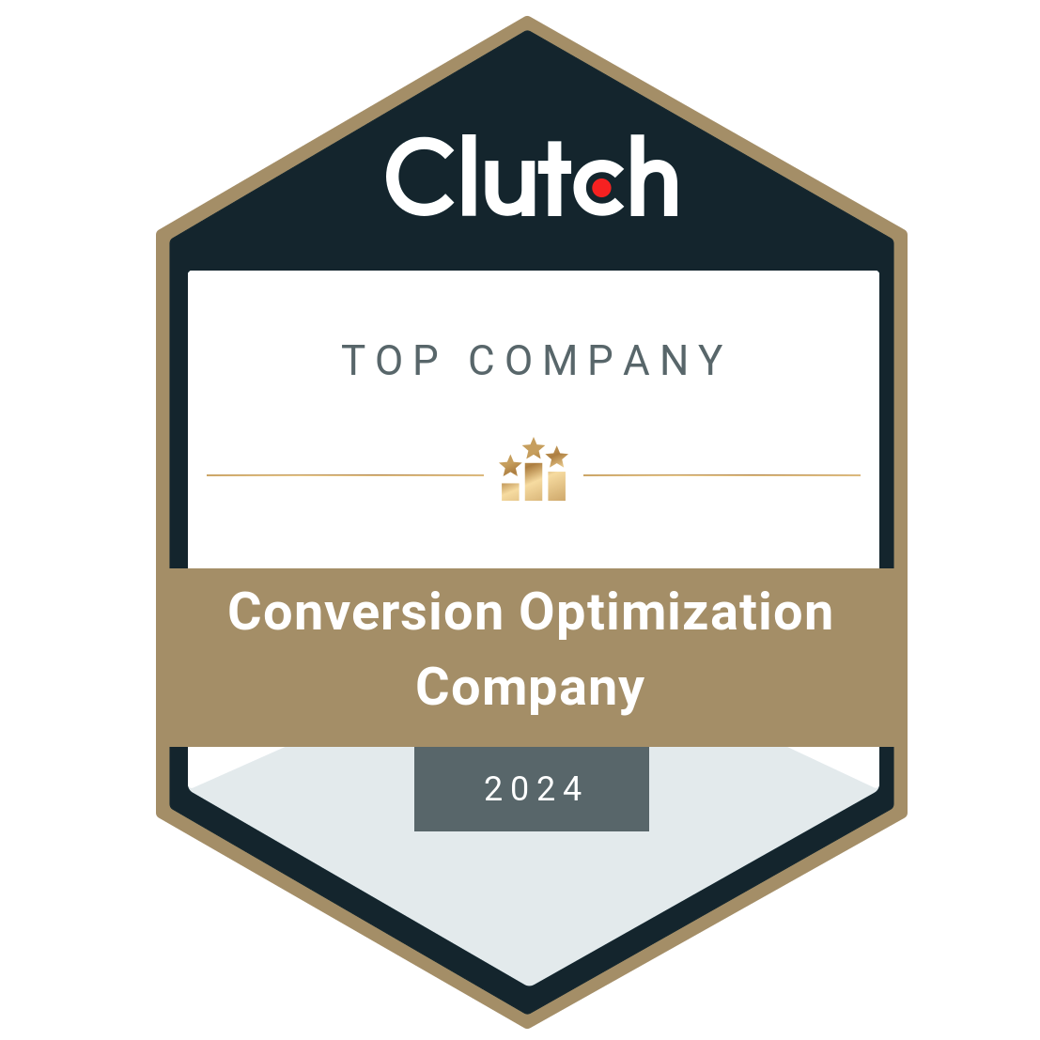How to Get Better at CRO | Advanced Tactics for Marketing Leaders
Familiarize yourself with the theory that Media Contour uses to understand visitors' behavior and emotions, and how it leads to increasing conversions.
Let's dive into the nitty-gritty of boosting conversion rates, sharing some invaluable insights without giving away all our top-secret strategies. After all, we're here to help you understand the theory behind conversion rates.
The Genesis: Your Product or Service
Your business revolves around offering a product or service, and there's a good reason why people choose you. Beyond fulfilling a basic need, your offering resonates on an emotional level. To elevate your conversion rates, we must delve deep into your customers' psyche and comprehend the emotions driving their decision to opt for your company.
Customer Understanding 101
To kickstart this journey, we need to accompany your existing customers throughout their buying process. A straightforward approach to uncovering the path to a purchase is by simply asking your customers after they convert. We aim to unearth the pain points preceding their discovery of a solution, the emotional triggers guiding their choices, any hesitations or concerns they encounter, and their post-solution sentiments.
A plethora of questions can be posed to gain these vital insights. For a detailed list of ideal surveys and survey questions, check here. Once armed with this treasure trove of information, we can tailor your copywriting to effectively address and emphasize the crucial pain points and emotions involved in the purchase decision. Your copy and pages should revolve around what your customers deem most significant.
Beyond delving into customer emotions, your secondary objective is identifying the most critical value proposition for your customers, be it exceptional customer service, competitive pricing, top-notch quality, user-friendliness, eco-friendliness, or even the undeniable charm of your CEO. While you might have your suspicions, obtaining this information directly from your customers eliminates any guesswork.
Building Trust and Dispelling Doubts
Selecting your company entails an unspoken agreement that transcends a mere monetary transaction. It essentially says, "I choose you, and in return, you won't disappoint me."
For new customers, establishing trust and alleviating any reservations prior to purchase simplifies the decision-making process. On the internet, where skepticism is the default stance, building trust is crucial. The most effective method for this is providing social proof. If you tell people you're trustworthy, they might not believe you. However, when others vouch for your trustworthiness, the narrative changes.
There’s an agreement that happens when your customers choose your company that goes beyond the exchange of money for goods and services. It’s the unwritten rule of doing business, and goes, “I’ll choose your company, and in return, you won’t screw me.”
If your customers are new to you, establishing as much trust as possible and relieving any hesitance before the purchase will help make the decision infinitely easier for your prospects.
Proven strategies for establishing trust on the internet, where the default behavior for users is to trust no one, is to provide social proof. No one trusts you if you tell them you’re trustworthy without proof. The opposite will happen. However, people will believe others if they say you’re trustworthy. We do this in the form of testimonials, case studies, videos, or user-generated content. Showing who we’ve helped, and providing proof needs to occur before the purchase.
We can take this a step further with a guarantee or warranty. This is why we see so many banners with things like “free shipping”, “30-day money-back guarantee”, or “lifetime warranty”. It gives our customers peace of mind knowing there is a fail-safe if they’re not 100% satisfied with their purchase.
The purpose of the guarantee is to remove the burden of financial responsibility from the customer and put it back on you. You can transfer that burden by providing a warranty, or a guarantee to establish confidence with your customers. They want the feeling that they are purchasing from a respected company and not taking a massive risk with their hard-earned money.
Usability and improving the user experience
We understand the need are business fulfills, we’ve identified our customer's pain points, and established trust while removing any reluctance. Our copywriting speaks directly to these issues and we’ve got consistent traffic to our website. Mr. President, I believe our work is done. Not even close.
User experience is the final piece of the conversion puzzle, and its importance cannot be overstated. Consider this compelling statistic: in its first year, Amazon invested 100 times more in customer experience than in advertising. So, let's acknowledge the significance of user experience and explore why it matters.
Your company doesn't exist in isolation on the internet; it shares space with competitors just a click away. Slow site speed, errors, confusing navigation, distracting graphics, cluttered content, or an unprofessional appearance can create that split-second hesitation causing potential customers to lose interest. Often, this happens on a subconscious level, making it challenging for companies to detect these issues on their own websites. Sadly, losing a sale is just as easy as that.
Enter A/B testing, Heat/Click/Scroll Maps, and User Testing—the stalwarts of optimizing user experience. Direct feedback and the opportunity to observe users navigating your site reveal those subtle "micro-hesitations" that might be costing you conversions. User testing is particularly essential for collecting first-party feedback on user experience.
Heat/Click/Scroll maps offer qualitative insights into user interaction with the compelling copy you've crafted. They illuminate how engaged users are with your content and provide clarity on what's working and what's being overlooked. Users might be skimming over vital information crucial for making a purchase decision.
Finally, A/B testing is the Holy Grail of conversion rate optimization. It allows you to experiment with different variations of your site or specific pages, targeting diverse visitor groups with a specific conversion goal in mind. Once a winning version emerges, you can display it to all visitors, eliminating guesswork and ensuring continuous improvement of your copy and user experience.
Suggested Read: THE SCIENCE OF ECOMMERCE CONVERSION OPTIMIZATION: TIPS AND TRICKS
Compelling Content: The Backbone of Conversion
At this point, we should remember the strength of content. Creating content is one part of the task; the other part is creating engaging, educational, and motivating material. Your content should combine learning with fun, it should strike a balance with your audience making them feel acknowledged and encouraged to interact.
Understanding why your audience is on your website is key. Are they on your site to learn, to compare items, or to buy something? Your material should meet all these different steps in their journey. Use blogs, infographics, videos, and podcasts to cater to different modes and preferences of learning.
SEO Tuning: Harmonizing with Algorithms
In the field of online marketing, SEO is your ultimate support. Your excellent content and well-devised methods are fruitless if they aren’t fine-tuned for search engines. Keywords are the critical element of SEO. Recognizing the appropriate keywords and fitting them into your content effortlessly makes you stand out in the sea of the internet.
But SEO goes beyond just keywords. It involves creating suitable content for users, utilizing meta tags wisely, optimizing images, and making sure that your website loads promptly and works well on mobile. Bear in mind, if search engines can easily decipher and classify your content, it increases the chances of your content’s visibility in search results.
Data's Power: Making Sense of Analytics
Do not ignore data’s importance. Regular checks of your site’s visits, sales conversions, user activities, and other important measurements can show what works and what needs adjustments. Google Analytics and similar tools are treasure troves of useful information. Use such data to refine tactics, improve your articles, and in the end, increase your conversion rates.
Final Thoughts
Mastering all parts of conversion rate enhancement can be tough. But it's possible, using a careful, step-by-step approach. The first move is usually the most vital: connect deeply with your customers. This connection should go beyond casual chats. Try to sincerely grasp why they prefer your business over rivals. Investigate their likes and dislikes in detail. Push even more to reveal the deeper feelings and thoughts behind their choices. Such understanding is priceless. It serves to guide your approaches and build stronger audiences links.
Moreover, keep in mind that the trip to better conversion rates isn't static; it demands ongoing adjustments. Digital arenas and shopper habits never stop changing, and your plan should keep pace with them. Watch out for new trends, be open to trying out new things, and learn lessons from both wins and losses. This flexible attitude, mixed with a deep customer understanding, formulates a robust mix for securing lasting triumph. Essentially, growing conversion rates isn't just about using special methods. It’s about shaping a brand experience that matches customer needs and feelings, strengthening customer loyalty, and fueling steady expansion.

























